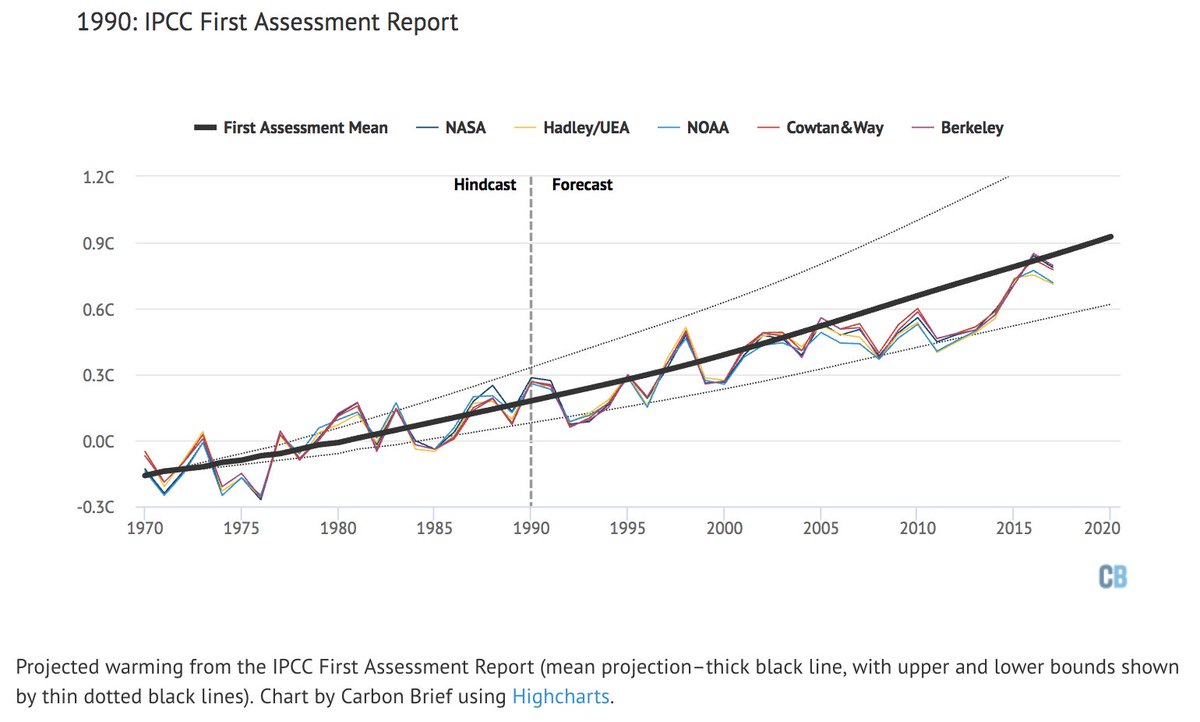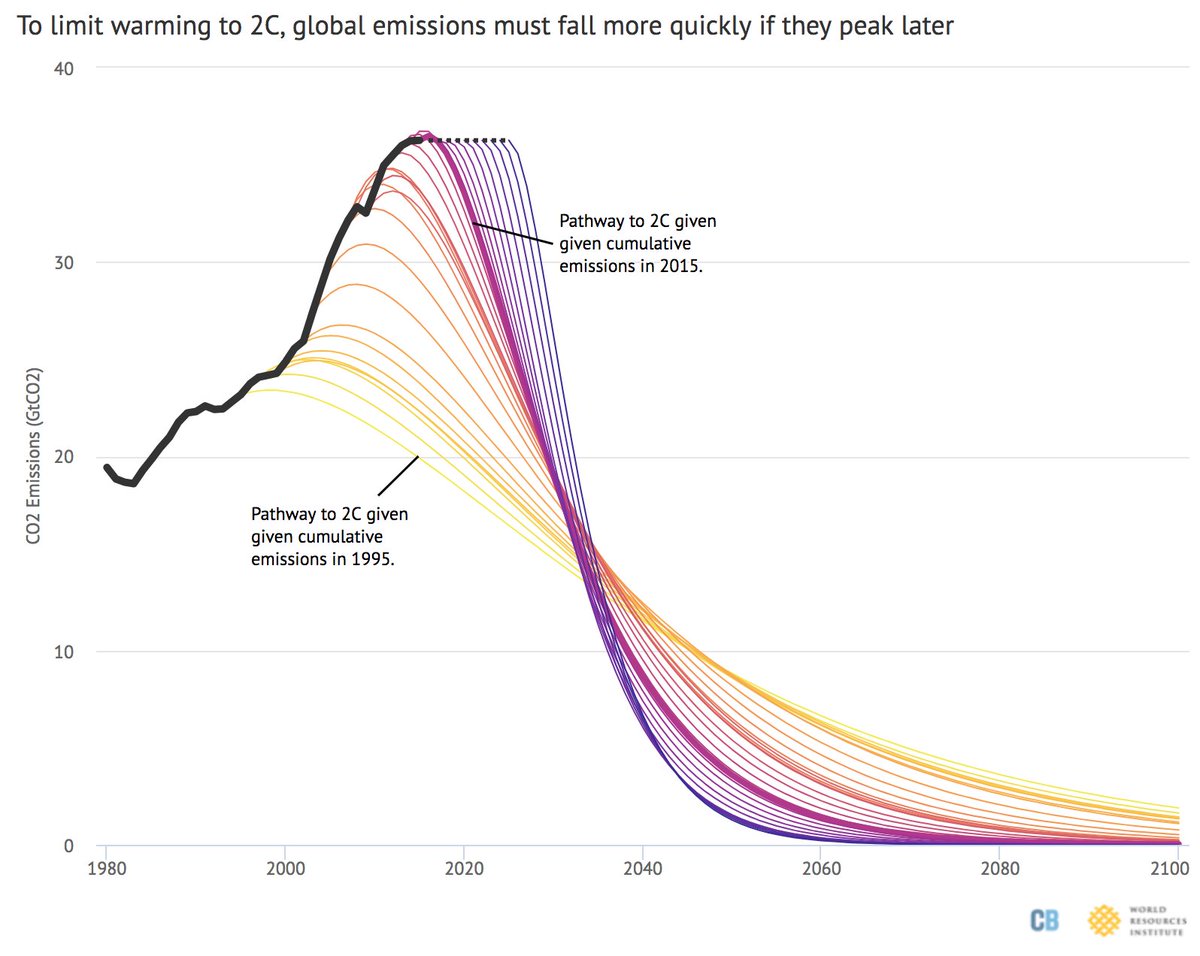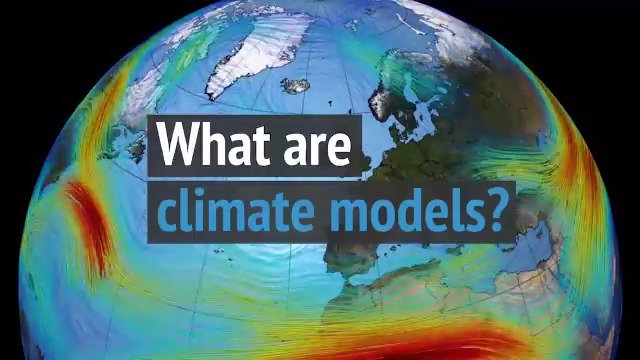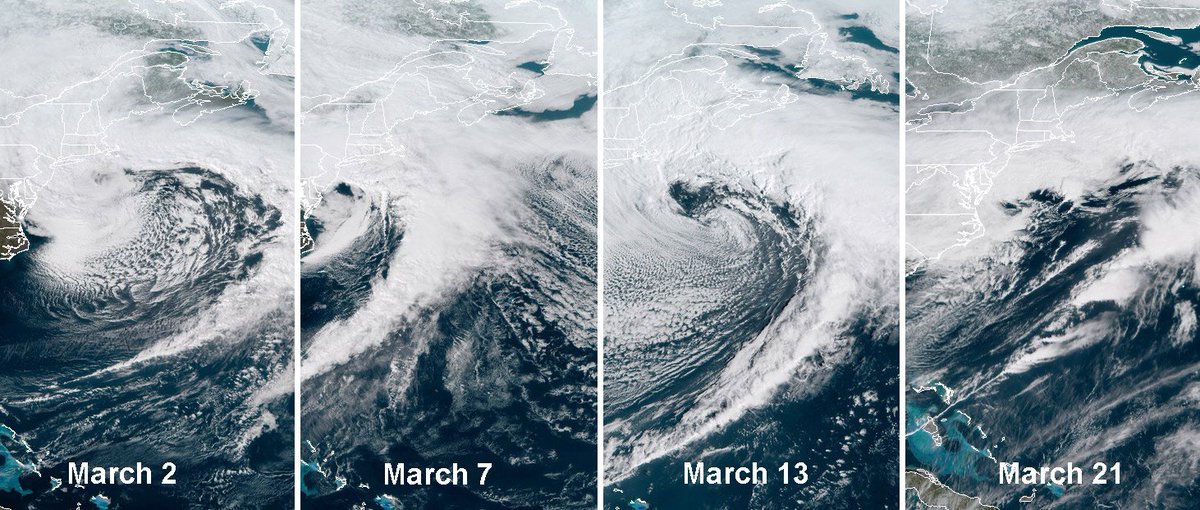Wednesday March 21st… Dear Diary. The main purpose of this ongoing post will be to track United States extreme or record temperatures related to climate change. Any reports I see of ETs will be listed below the main topic of the day. I’ll refer to extreme or record temperatures as ETs (not extraterrestrials)😊. Here is today’s main climate change related topic:
Hindcasts and Forecasts
Welcome to spring 2018. Segueing from yesterdays topic on the five stages of climate change denial, any person studying, writing or blogging about global warming with any credibility needs to point to what are termed “hindcasts,” which verify climate model projections. Now that it is the year 2018 there have been nearly thirty years since 1990 to see how well climate models have been doing since the first IPCC assessment. Hindcasts are doubly important to look at because models that do better with them are more than likely superior forecasting global warming conditions in the future. On these posts I usually highlight the work of one climate scientist at a time. Today it is Zeke Hausfather’s turn:

Longer we wait to reduce emissions, steeper the reductions need to be to avoid >2C warming. Next few years critical. https://www.carbonbrief.org/analysis-wri-data-suggests-emissions-have-already-peaked-49-countries …


Speaking of the consequences of climate change in association with the “how soon and how much” debate Bob Henson has come up with a superb summary of work going on to determine if climate change is strengthening winter storms: https://weather.com/science/environment/news/2018-03-21-climate-change-winter-weather
 The Weather ChannelVerified account @weatherchannel
The Weather ChannelVerified account @weatherchannel


